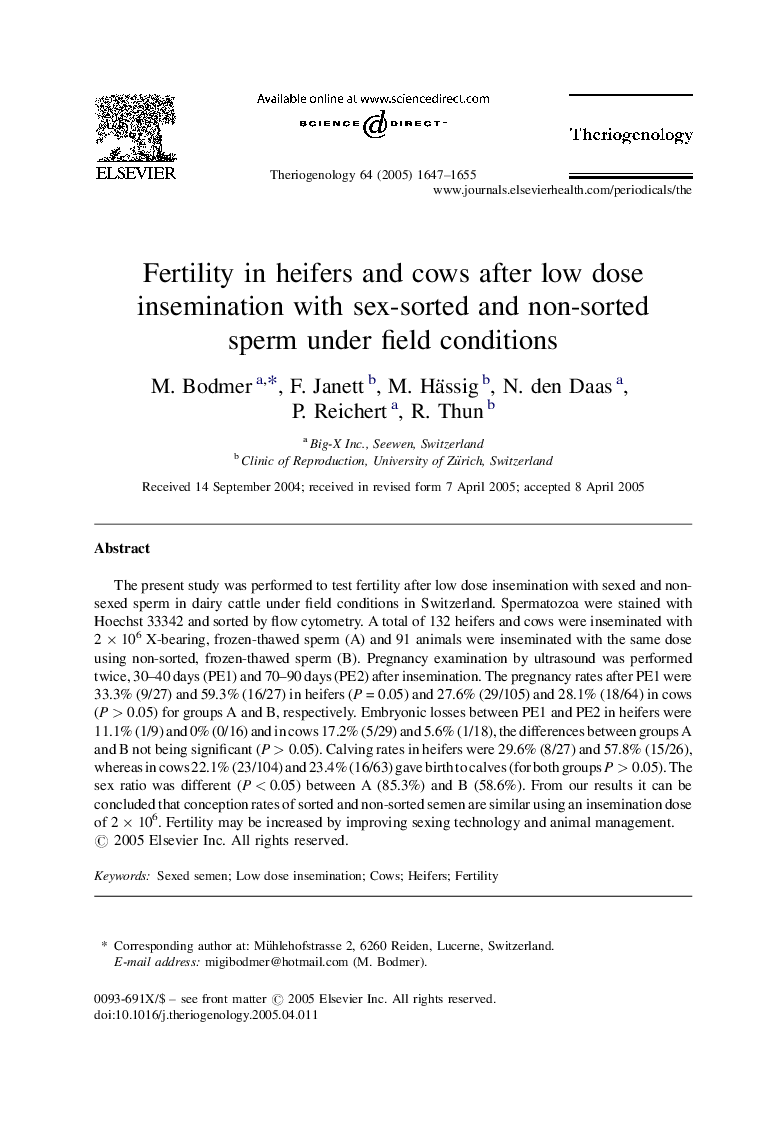| Article ID | Journal | Published Year | Pages | File Type |
|---|---|---|---|---|
| 10893894 | Theriogenology | 2005 | 9 Pages |
Abstract
The present study was performed to test fertility after low dose insemination with sexed and non-sexed sperm in dairy cattle under field conditions in Switzerland. Spermatozoa were stained with Hoechst 33342 and sorted by flow cytometry. A total of 132 heifers and cows were inseminated with 2Â ÃÂ 106 X-bearing, frozen-thawed sperm (A) and 91 animals were inseminated with the same dose using non-sorted, frozen-thawed sperm (B). Pregnancy examination by ultrasound was performed twice, 30-40 days (PE1) and 70-90 days (PE2) after insemination. The pregnancy rates after PE1 were 33.3% (9/27) and 59.3% (16/27) in heifers (PÂ =Â 0.05) and 27.6% (29/105) and 28.1% (18/64) in cows (PÂ >Â 0.05) for groups A and B, respectively. Embryonic losses between PE1 and PE2 in heifers were 11.1% (1/9) and 0% (0/16) and in cows 17.2% (5/29) and 5.6% (1/18), the differences between groups A and B not being significant (PÂ >Â 0.05). Calving rates in heifers were 29.6% (8/27) and 57.8% (15/26), whereas in cows 22.1% (23/104) and 23.4% (16/63) gave birth to calves (for both groups PÂ >Â 0.05). The sex ratio was different (PÂ <Â 0.05) between A (85.3%) and B (58.6%). From our results it can be concluded that conception rates of sorted and non-sorted semen are similar using an insemination dose of 2Â ÃÂ 106. Fertility may be increased by improving sexing technology and animal management.
Keywords
Related Topics
Life Sciences
Agricultural and Biological Sciences
Animal Science and Zoology
Authors
M. Bodmer, F. Janett, M. Hässig, N. den Daas, P. Reichert, R. Thun,
